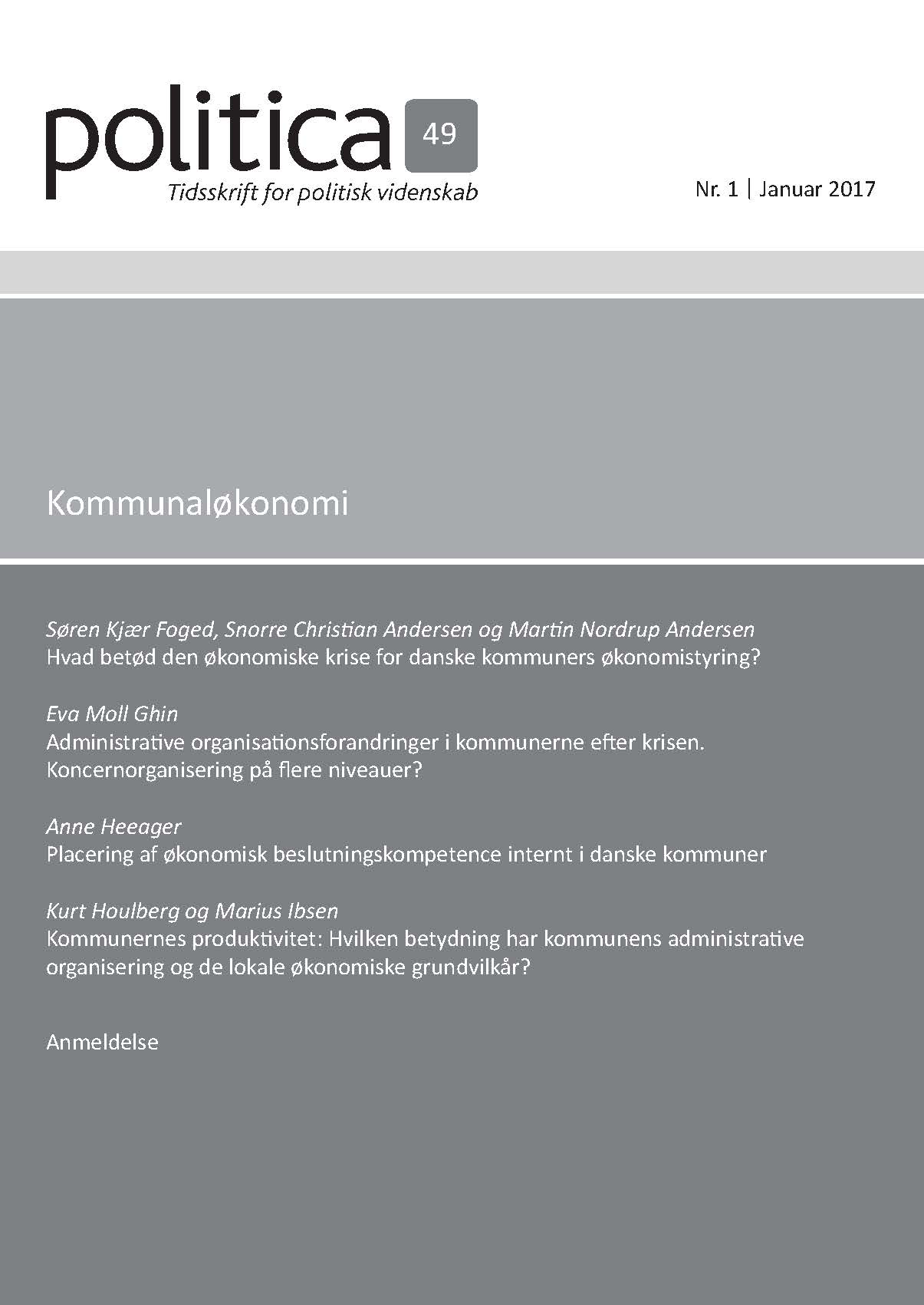Organizational change in times of austerity in Danish municipalities
DOI:
https://doi.org/10.7146/politica.v49i1.131269Abstract
In this article it is investigated how the conditions of crisis and austerity have contributed to organizational change in Danish municipalities. Based on a comparative case study of five municipalities, it is argued that tighter fiscal control by the central government created a political window for change in municipalities with weak expenditure control, and that it led to economic pressure necessitating cutbacks on administrative expenses in the municipalities. Both mechanisms reinforced the tendency for change towards an organizational model that represents a “whole-of-government” perspective. According to the study, the new organizational model also affects the organization of individual policy areas. In the area of public schools, the top administrative officer is made responsible for a broader task area and is integrated in the top management. It also means that schools are integrated more into the administrative hierarchy by way of more administrative layers, more follow-up procedures, and new management fora.





